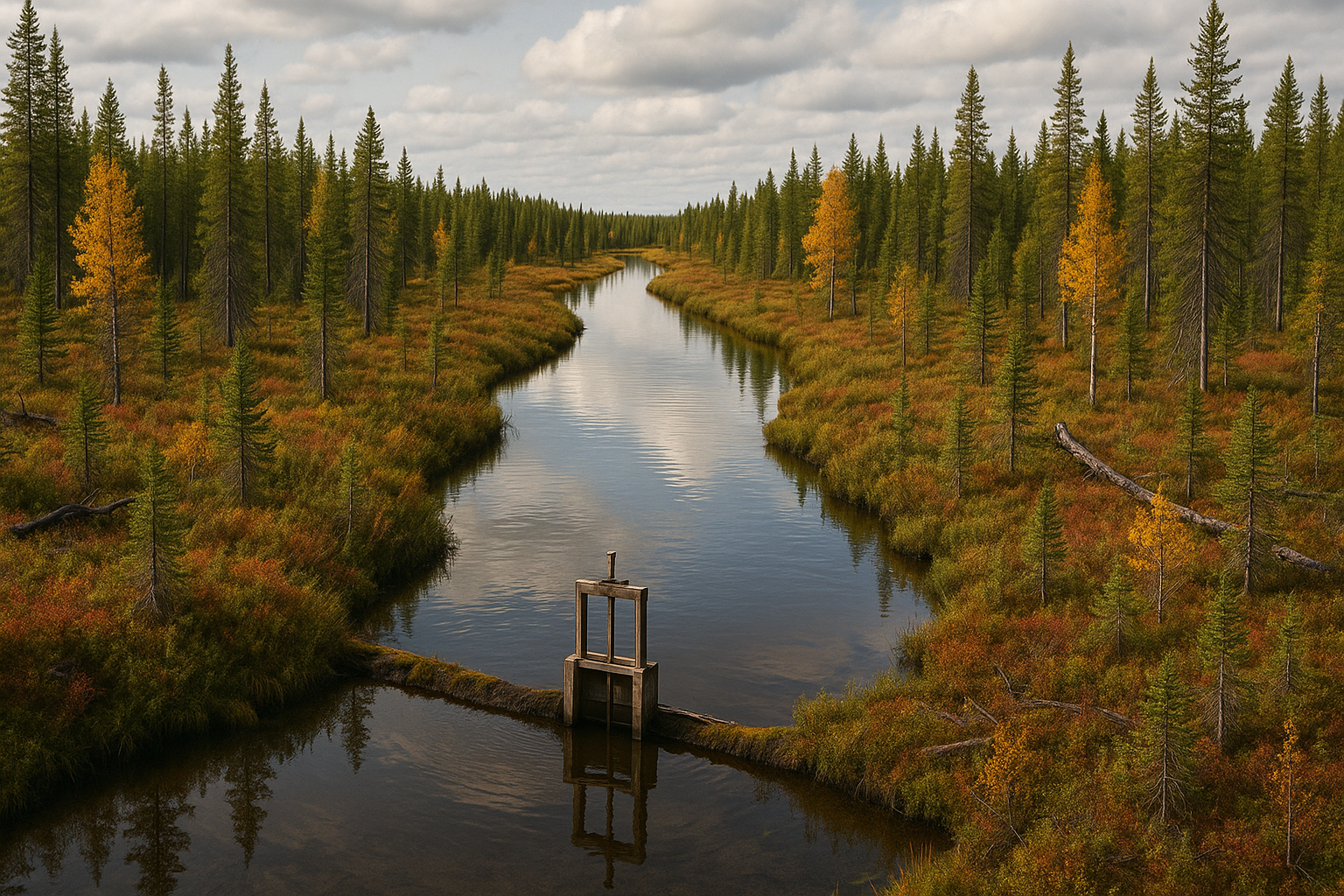Managing Water Levels to Transform Drained Peatlands into Long-Term Carbon Sinks
The study by SLU, Uppsala University, and Lund University found that rewetting drained boreal peatlands significantly increases carbon dioxide absorption, offsetting short-term methane emissions. Over time, high water levels turn these landscapes from greenhouse gas sources into powerful long-term climate coolers.

The study “Response of greenhouse gas fluxes to simulated water level management under contrasting climate scenarios in a peatland mesocosm study” by researchers from the Swedish University of Agricultural Sciences (SLU), Uppsala University, and Lund University explores how managing water levels in boreal peatlands can mitigate climate change. Peatlands are vast carbon stores that have accumulated over millennia, but widespread drainage for forestry and agriculture, especially in Sweden, which has the third-largest area of drained forested peatlands globally, has turned many of these natural carbon sinks into potent carbon sources. This research examines whether rewetting or maintaining natural hydrology could reverse those emissions, using a controlled experiment that simulated different water levels and climate futures.
A Controlled Experiment in Climate Futures
The experiment took place in climate-controlled chambers at SLU, using peat cores collected from a drained boreal fen at the Trollberget Experimental Area in northern Sweden. Each chamber contained natural peatland vegetation, including Sphagnum mosses, graminoids, and ericaceous shrubs. The researchers tested three water level management strategies, low, medium, and high, representing respectively: intensive drainage (ditch cleaning), unmanaged semi-rewetting, and full rewetting through blocked ditches. They then subjected these mesocosms to two climate regimes: one reflecting the 2022 growing season and another simulating a future under the IPCC’s RCP 4.5 scenario, with a 2.5°C temperature rise and increased precipitation. Over six months, the team conducted biweekly measurements of carbon dioxide (CO₂) and methane (CH₄) fluxes, later extrapolating the data through radiative forcing models to understand their long-term climate implications.
Water Levels Shape the Climate Response
The findings were striking: water level management was the dominant factor influencing greenhouse gas fluxes, more so than climate conditions. High water levels, simulating rewetting, boosted CO₂ uptake two to three times compared with low or medium treatments. This surge in carbon sequestration was linked to vigorous regrowth of Sphagnum moss, which thrives in saturated soils. Conversely, low water levels enhanced peat decomposition and respiration, releasing large quantities of CO₂ but producing very little CH₄. Medium levels provided moderate benefits, balancing carbon capture and emissions.
When future climate conditions were simulated, CO₂ uptake rose by up to 61% under high water levels, showing that a warmer, wetter climate could reinforce the carbon sink capacity of rewetted peatlands. Under low or medium water levels, however, warming intensified respiration losses, weakening their role as sinks. The results emphasize that restoring and maintaining high water tables can buffer peatlands against climate change, turning them back into effective carbon sinks despite future warming.
Vegetation Tells the Story of Carbon
Vegetation responses revealed the underlying ecological drivers of these gas fluxes. In rewetted peatlands, Sphagnum moss grew more than twice as fast under the future RCP 4.5 climate compared to current conditions, reclaiming dominance over the peat surface. Graminoids also flourished in wetter soils, while ericaceous shrubs, typical of drained conditions, declined sharply. The biomass index data illustrated this transformation vividly: in rewetted systems, Sphagnum covered up to 87% of the surface area, while in drained systems, dry mosses and shrubs prevailed. These vegetation shifts directly shaped carbon dynamics; mosses and sedges enhanced CO₂ uptake, whereas shrubs promoted decomposition and nutrient turnover that released CO₂. The experiment demonstrated that the type of vegetation thriving under each hydrological regime determines whether the ecosystem acts as a carbon sink or source.
Methane: A Short-Term Price for Long-Term Cooling
Rewetting, however, came with a familiar trade-off: increased methane emissions. The radiative forcing simulations showed that rewetted peatlands initially produced a warming pulse due to elevated CH₄ output. Yet this short-term effect diminished within decades. As Sphagnum cover expanded and carbon uptake intensified, the accumulated CO₂ savings outweighed the methane cost. Within 35 to 40 years, rewetted peatlands transitioned from net climate warmers to net coolers. Over a 500-year projection, the high water level scenario showed a lasting cooling effect, while drained peatlands remained a persistent warming source. Medium water levels under the future climate also hinted at a potential shift toward cooling, though with greater uncertainty. These results echo broader research showing that methane’s short atmospheric lifetime cannot offset the long-term carbon sequestration potential of rewetted peatlands.
Rewetting as a Climate Solution
The study concludes that rewetting drained peatlands is one of the most effective nature-based climate solutions for northern regions. High water levels foster Sphagnum recovery, sustain CO₂ uptake, and, despite short-lived methane increases, yield long-term cooling. Drained peatlands, by contrast, remain chronic emitters of CO₂ as oxygen exposure accelerates peat oxidation. The authors caution that their findings, while robust, stem from a single growing season in controlled conditions; long-term field studies are necessary to capture vegetation succession, microbial feedbacks, and year-round flux variability. Nonetheless, the evidence is clear: managing water levels wisely can transform degraded peatlands from climate liabilities into assets.
In the context of Sweden’s climate ambitions and global net-zero goals, this study by Salimi and colleagues from SLU, Uppsala University, and Lund University provides compelling experimental proof that restoring wetland hydrology can deliver real climate dividends. The research not only quantifies how rewetting shifts the carbon balance but also highlights the intricate interplay between hydrology, vegetation, and climate. By showing that short-term methane emissions are outweighed by long-term CO₂ sequestration, it reframes rewetting not as a compromise but as a critical investment in climate stability. Over time, these revived peatlands could once again act as the vast carbon vaults they were meant to be, quietly cooling the planet, one moss layer at a time.
- READ MORE ON:
- boreal peatlands
- climate change
- Peatlands
- global net-zero goals
- FIRST PUBLISHED IN:
- Devdiscourse










